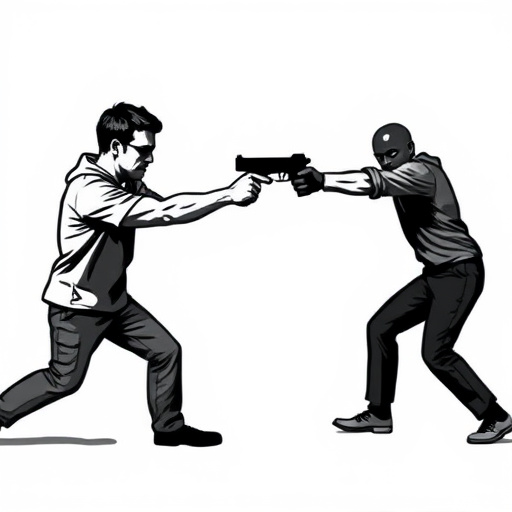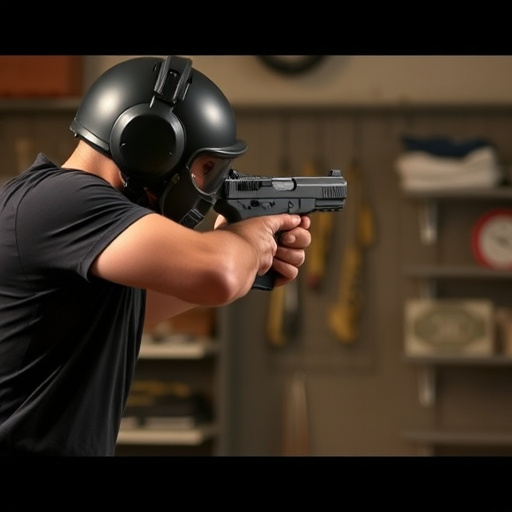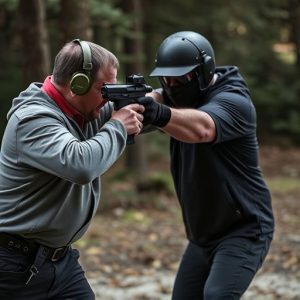Stun Weapon Projectile Range: Effective Self-Defense for College Students
College students increasingly turn to self-defense stun guns as a non-lethal option for personal saf…….
College students increasingly turn to self-defense stun guns as a non-lethal option for personal safety, particularly on campuses. These devices use electric shock through metal probes to incapacitate targets, with ranges typically between 15-30 meters (50-100 feet), though higher voltage models can reach up to 46 meters (150 feet). Key factors influencing effectiveness include wind conditions and distance to the target, while legal status varies widely across states and campuses. Responsible use requires thorough research on local laws, comprehensive training, secure storage, regular maintenance, and inspection.
“In today’s world, self-defense options for college students are increasingly important. Stun guns, as non-lethal weapons, offer a viable alternative for personal safety on campus. This article delves into the capabilities of stun weapon projectile range, exploring their technology and effectiveness. We’ll discuss why these devices appeal to students, the factors influencing their reach, and the legal considerations surrounding their carrying. Understanding the range and limitations ensures informed decisions regarding self-defense stun guns for college students.”
- Understanding Stun Weapon Technology: How They Work and Their Basic Range
- Self-Defense Considerations for College Students: Why Stun Guns Could Be a Viable Option
- Factors Affecting Projectile Range: Wind, Distance, and User Skill
- Legal Aspects and Safety Precautions for Carrying Stun Guns on Campus
Understanding Stun Weapon Technology: How They Work and Their Basic Range

Stun weapons, also known as self-defense stun guns, are non-lethal devices designed to incapacitate a target through electrical shock. These tools have gained popularity among individuals seeking effective personal protection, especially college students navigating potentially dangerous environments. The technology behind stun weapons involves delivering a powerful electric current through two metal probes or electrodes, causing muscular contractions and disorientation in the target. This disruption disrupts balance and coordination, rendering the individual temporarily immobile.
The basic range of these stun guns varies significantly depending on factors like power output, battery life, and weather conditions. On average, a self-defense stun gun can stun a target within a 15 to 30-meter (50 to 100-foot) range. However, longer-range models with higher voltage outputs can extend this distance up to 46 meters (150 feet). Understanding these ranges is crucial for college students considering self-defense options, as it helps them make informed decisions about the right stun gun for their personal safety needs in various scenarios, from campus walks to late-night study sessions.
Self-Defense Considerations for College Students: Why Stun Guns Could Be a Viable Option

College students often face unique challenges in terms of personal safety, especially as they navigate new environments and potentially unsupervised living spaces. Self-defense is a crucial consideration, and traditional methods like pepper spray or self-defense classes are well-known options. However, introducing stun guns as a viable self-defense tool for college students has gained traction due to their non-lethal capabilities.
Stun weapons offer a significant advantage in close-quarters confrontations, which are common on campuses. With a range of typically up to 30 feet, these devices can provide crucial seconds to enable an individual to escape or summon help. The high voltage, low current stun guns deliver a powerful electric shock that temporarily incapacitates the target, giving users time to retreat safely and contact authorities. This non-lethal approach is particularly appealing for students who want to protect themselves without causing permanent harm, while also ensuring their accountability in potentially volatile situations.
Factors Affecting Projectile Range: Wind, Distance, and User Skill

The range at which a self-defense stun gun can be effective is influenced by several key factors. One of the most significant variables is wind conditions. Similar to how a strong gust can alter the trajectory of a traditional projectile, wind can greatly impact the flight path of a stun weapon’s projection. Even minor breezes might cause slight deviations, leading to reduced accuracy and potential missed targets.
Another crucial element is the distance between the user and their intended target. Stun guns generally have a shorter effective range compared to firearms, often limited to several yards. This range can be affected by the user’s skill level as well. Experienced individuals who possess better aim and technique can make up for any loss in projectile velocity or trajectory caused by external factors, ensuring more reliable results within the weapon’s specified range.
Legal Aspects and Safety Precautions for Carrying Stun Guns on Campus

The legal landscape surrounding self-defense stun guns for college students is a complex one, varying significantly across jurisdictions. While some states and campuses permit the carrying of stun guns with proper training and certification, others have stringent regulations or outright ban their use. Students considering arming themselves with stun guns must thoroughly research local laws and campus policies to avoid legal repercussions. Non-compliance can result in fines, disciplinary action, or even criminal charges.
Safety precautions are paramount when carrying a stun gun on campus. Students should undergo comprehensive training in its proper use and handling to ensure they can deploy it effectively during an emergency. Additionally, responsible storage is crucial; stun guns should be kept securely locked away until needed, preventing unauthorized access. Regular maintenance and inspection of the device are also essential to guarantee optimal performance when required for self-defense against potential threats on campus.
Stun weapons equipped with projectile capabilities offer a unique self-defense solution for college students, especially when considering their non-lethal nature and relatively short range. While legal regulations vary across campuses, understanding the technology, factors affecting range, and safety precautions can empower students to make informed decisions regarding personal safety. As these devices become more accessible, it’s crucial for students to weigh the benefits against potential drawbacks, ensuring they have a comprehensive strategy for navigating challenging situations.


